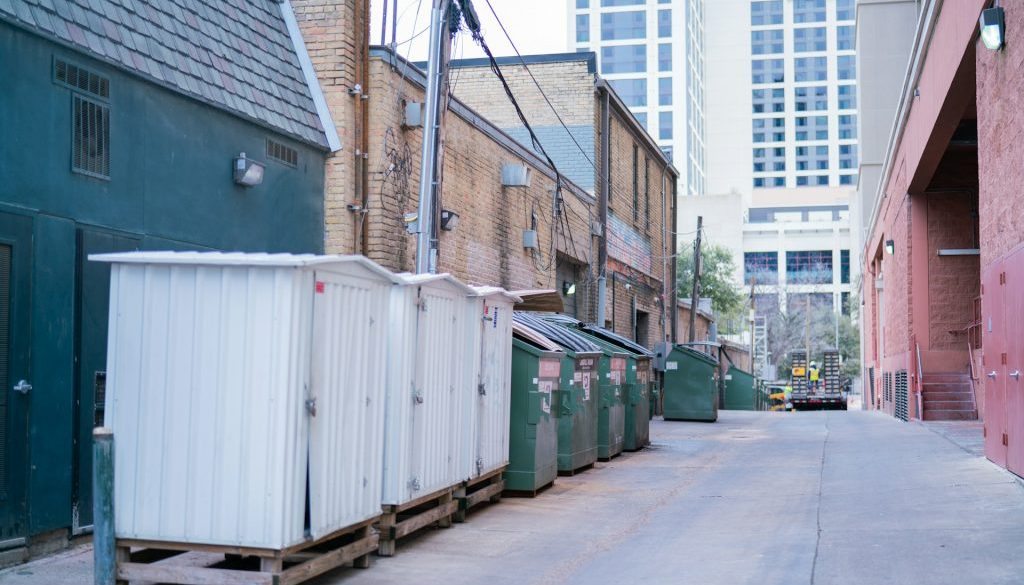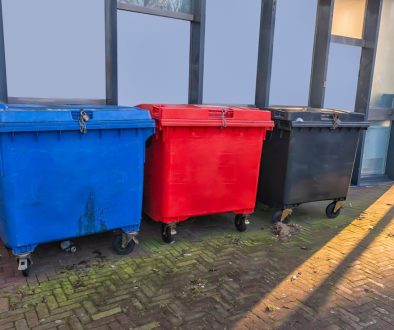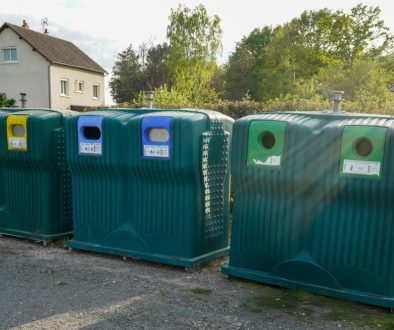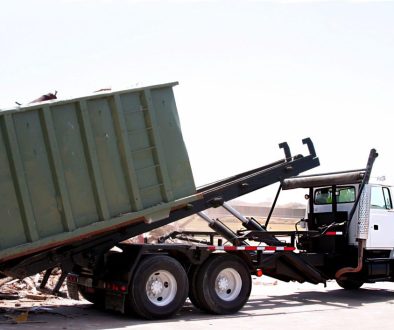Hiring a skip for your business in Congleton can be a smart move, but it’s easy to overlook just how much you can get out of one. Whether you’re dealing with packaging, broken pallets, or regular office clear-outs, skips can do more than just sit outside collecting waste. With a bit of planning and the right habits in place, that skip can help you control costs and stay more organised without needing extra space or multiple collections.
A lot of businesses throw everything in without thinking twice, which means the skip fills up too fast, leading to more collections and higher expenses. But improving how you use a skip is simpler than you might think. It’s not about turning your staff into waste experts, but about smarter decisions, better routines, and using the space you’re already paying for more effectively. If you’re looking to make your skip hire efforts work better for you, the next few areas are worth looking at.
Assessing Your Business Waste Needs
Before you can figure out the best way to use a skip, you need to take a proper look at what kind of waste your business is producing. This doesn’t have to take long, but a quick assessment gives you a clearer picture of what’s being thrown out, how often certain types of waste appear, and what might be taking up extra space without adding real weight.
Think about these questions:
– What kind of waste do we produce daily, weekly, and monthly?
– Are we throwing away the same things repeatedly?
– Could some items be stored or bulked up before disposal?
– Are there times of the year when there’s more waste?
For example, a shop in Congleton might notice packaging waste goes up just before Christmas or during sales when deliveries come in thick and fast. A builder, on the other hand, may see a steady stream of rubble or plasterboard every week. Knowing these patterns lets you match waste output to collection frequency and skip size, avoiding overflows or half-empty skips.
Also, take a quick inventory of the rubbish types: cardboard, food waste, plastics, metals, general building materials, or even old fixtures and broken electronics. Grouping them into categories, even loosely, helps identify which skips are best suited. Some skips are better for certain types of waste, and having mixed waste when it’s not appropriate could cost you more or create collection issues.
Making sure your employees understand this breakdown can help too. A simple visual guide near your disposal zones reminding people what goes where can make a difference. It’s all about reducing confusion, wasting less space, and making skip hire support your business, not add to its headaches.
Maximising Skip Space
Once you know what your rubbish looks like, it’s time to focus on how you’re using the skip itself. Believe it or not, the way items go into the skip affects how much it can hold. Think of it like packing a suitcase. If you just throw things inside, you’ll need another one before long. But if you plan the layers and arrange everything well, you’ll fit a lot more in without needing a second skip.
Here are a few handy tips to maximise your skip usage:
1. Break Down Bulky Waste
Don’t throw in full-size pallets or half-assembled shelving. Snap or cut materials down to pieces where possible. Cardboard boxes should be flattened, and odd-shaped wooden items should be dismantled.
2. Stack Similar Items Together
Group waste types together so they can lie flatter. A pile of boards will take up less space than the same boards scattered over random angles.
3. Fill Gaps with Smaller Items
Use small bits like packaging, rubble, or wires to stuff the gaps between larger objects. This reduces empty air pockets and makes full use of the space.
4. Place Heavy Items at the Bottom
Stack heavier or solid items first before building on top with soft or crushable waste. This prevents air-filled items from taking up too much space too early.
5. Train Your Team
Even just a 5-minute walkthrough on good waste-stacking could help your team future-proof the skip’s capacity. It’s the kind of task that saves money in the long run without changing what you’re already doing.
Paying attention to what goes inside and how it’s arranged can save both time and money, especially if you’re in a busy business area like Congleton where skip collections need to be well-timed. Better space use equals fewer skips and fewer collections, and that means more budget and less fuss.
Scheduling and Frequency
Once skip use is under control, the next smart move is getting your timing right. It’s easy to set a skip down and not think twice about it until it’s full. But if pickups are too frequent or not frequent enough, you’re either spending too much or causing hold-ups due to overflow. Getting the timing right boosts overall efficiency and helps your team stay productive rather than worrying about where to dump the rubbish next.
Start by tracking how quickly your skip fills up. Even doing this for a couple of weeks gives you a good idea of collection needs. Are you filling a skip over five days or two? Do you see slower build-up during quieter periods? Be honest with what you find. Rushed collections before a skip is full can end up costing more.
Holding off on collections might seem like saving money at first, but it usually brings more mess. Overflowing skips aren’t just frustrating to deal with but bring legal risks and can make your site look untidy. It’s especially tricky in towns like Congleton, where space and access can sometimes be tight for collections. A filled or improperly managed skip might delay jobs or inconvenience neighbours.
If your business has regular waste output, set up scheduled collections rather than calling on short notice. Scheduled pickups mean fewer disruptions and allow your operations to run as planned. On the other hand, if your waste flow happens in peaks like retail restocks or warehouse cleanups, a more flexible arrangement might be best.
Keep reviewing how your waste cycle changes across seasons or different projects. As your business changes, your collection schedule can be tweaked to stay in step without creating delays or extra spending. Creating a simple log of fill-up dates and times can help you fine-tune your collection interval over time.
Regulatory Compliance And Safety
While skip hire seems straightforward, skipping the legal stuff won’t do you any favours. Every business producing waste needs to manage it within the law, which includes proper paperwork, safe handling, and using the right kind of skip for the waste involved. Overlooking any part of this can lead to fines and even harm your company’s reputation.
Different waste types come with different rules. Hazardous material, for example, can’t be lumped in with general rubbish. Things like broken electronics, paint tins, and oily rags need special treatment. That’s where understanding what types of waste you produce becomes even more valuable so the right arrangement is made from day one.
Here’s a quick list to help tick off basic safety and compliance steps:
– Use the correct type of skip for your waste
– Clearly label disposal areas onsite
– Separate recyclable and non-recyclable items when possible
– Never overfill a skip past its fill line
– Store waste safely, avoiding fire hazards or exposure to harmful materials
– Keep skips away from pedestrian paths and vehicle routes
– Record all waste movements, especially if dealing with controlled or hazardous waste
Training staff to follow these steps makes a huge difference. If your team understands what’s allowed and how to handle waste safely, you reduce the risk of accidents or penalties. Even simple signage and a clear chain of responsibility can tighten up daily handling.
In Congleton, following local council rules is just as important. If a skip sits on public land without permits or overflows onto pavements, you’re likely to draw unwanted attention. That’s why it pays to build waste safety and compliance checks into your business routine.
Streamlining Skip Hire With Better Planning
When businesses in Congleton treat skip hire as part of day-to-day operations rather than an afterthought, things tend to run much smoother. From choosing the right skip size to managing how and when it’s used, there’s a lot that good planning can take care of behind the scenes. Businesses that know their waste pattern and train staff to follow simple habits often see fewer disruptions and better use of space.
A real-life example comes from a small furniture shop that was dealing with mixed packaging waste after large deliveries. By flattening boxes, separating materials, and setting up a routine schedule, they halved the number of collections each month without needing a second skip. It wasn’t a big investment or a major change, just a better method tailored to how they worked.
Proper planning doesn’t mean more effort, just smarter effort. Using the skip effectively, sticking to regular collection times, and staying on top of safety and rules can all help your skip work harder for your business without getting in the way. Skips shouldn’t be a problem to manage, they should help your workday flow better.
Once the right routine is in place, skip hire becomes less about logistics and more about making everyday tasks easier. By treating waste like an organised part of operations, you avoid last-minute scrambles and give your team one less thing to worry about.
To make handling your business waste simpler and more efficient, trust Enviro Skip Hire for your needs in waste collection. With smart planning and the right team on your side, managing rubbish in Congleton becomes easier. Ready to transform how your business handles its waste? Learn more about skip hire in Congleton and discover how our services can streamline your operations while keeping costs down.




